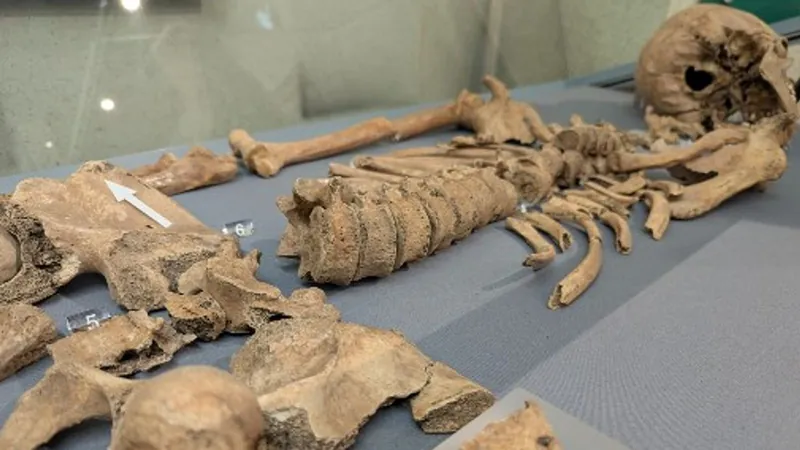
Unveiling History: Gladiators vs. Lions! Bite Marks on Skeleton Confirm Epic Battles
2025-04-24
Author: William
In a groundbreaking discovery, bite marks on a skeleton from Roman-era York have provided the first concrete evidence that gladiators faced off against lions. This revelation sheds new light on the brutal spectacles of ancient Rome.
The remarkable find includes teeth imprints from a large cat etched into the pelvis of a man interred in a cemetery believed to hold the remains of gladiators. While images of these fierce battles have long been depicted in mosaics and pottery, this is the first physical proof of such encounters.
Experts confirmed that the lesions on the bones matched modern analyses of large feline teeth, likely belonging to a lion. The male skeleton is estimated to have belonged to a man aged between 26 and 36 at the time of his death, occurring around the 3rd century AD, when York was known as Eboracum—a key military base in Roman Britannia.
Professor Becky Gowland from Durham University’s Department of Archaeology expressed excitement over the discovery, remarking, "This is an exciting new analysis and the first direct evidence of human-animal spectacle in Roman Britain and beyond. It also raises significant questions about the transport and significance of exotic animals throughout the Roman Empire."
The research team is eager to delve deeper into how lions were brought to Britain and the lifestyles of gladiators pushing the boundaries of the Roman world.
Led by Professor Tim Thompson from Maynooth University, the study, published in the journal PLOS One, emphasizes the shift in our understanding of Roman gladiatorial combat. Thompson stated, "For years, our comprehension of Roman entertainment has largely hinged on historical texts and artistic depictions. This discovery offers the first tangible evidence that such grand events truly occurred, altering our view of entertainment culture in the region."









 Brasil (PT)
Brasil (PT)
 Canada (EN)
Canada (EN)
 Chile (ES)
Chile (ES)
 Česko (CS)
Česko (CS)
 대한민국 (KO)
대한민국 (KO)
 España (ES)
España (ES)
 France (FR)
France (FR)
 Hong Kong (EN)
Hong Kong (EN)
 Italia (IT)
Italia (IT)
 日本 (JA)
日本 (JA)
 Magyarország (HU)
Magyarország (HU)
 Norge (NO)
Norge (NO)
 Polska (PL)
Polska (PL)
 Schweiz (DE)
Schweiz (DE)
 Singapore (EN)
Singapore (EN)
 Sverige (SV)
Sverige (SV)
 Suomi (FI)
Suomi (FI)
 Türkiye (TR)
Türkiye (TR)
 الإمارات العربية المتحدة (AR)
الإمارات العربية المتحدة (AR)